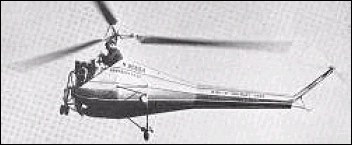|
|
Another front-engine design, the obscure Haig-K Aircraft Corporation HK-1. The Continental C85 is practically in the pilot's lap! The Cessna CH-1 helicopter
* * *
| Technical data for Haig-K HK-1
Crew: 1,
passengers: 1,
engine: 1 x 85hp Continental C-85,
main rotor diameter: 8.13m,
take-off weight: 468kg
|
Warning: mysqli_connect(): php_network_getaddresses: getaddrinfo for mysql5.zone.ee failed: Name or service not known in /data03/virt15346/domeenid/www.aviastar.org/htdocs/helicopters_eng/haig_hk-1.php on line 66
Fatal error: Uncaught mysqli_sql_exception: php_network_getaddresses: getaddrinfo for mysql5.zone.ee failed: Name or service not known in /data03/virt15346/domeenid/www.aviastar.org/htdocs/helicopters_eng/haig_hk-1.php:66
Stack trace:
#0 /data03/virt15346/domeenid/www.aviastar.org/htdocs/helicopters_eng/haig_hk-1.php(66): mysqli_connect('mysql5.zone.ee', 'd14657sa18989', Object(SensitiveParameterValue))
#1 {main}
thrown in /data03/virt15346/domeenid/www.aviastar.org/htdocs/helicopters_eng/haig_hk-1.php on line 66
|





